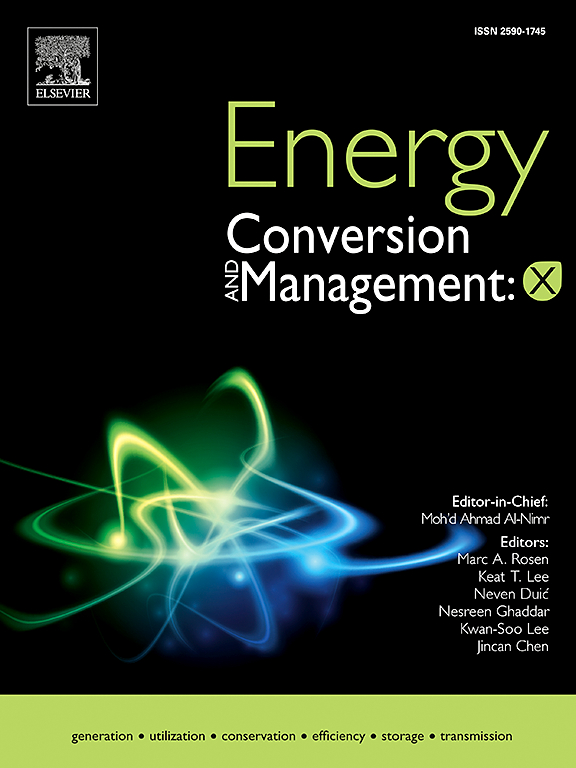优化校园微电网能源系统:经济、环境和敏感性见解
IF 7.6
Q1 ENERGY & FUELS
引用次数: 0
摘要
能源需求正在迅速增长,特别是在印度等传统能源占主导地位的发展中国家。由于资源有限和碳排放不断上升,应对能源挑战至关重要。这项工作通过集成太阳能、风能、柴油发电机和电池存储,为金奈Vellore理工学院开发了一种优化的混合能源系统设计,以提高能源的可靠性和可持续性。采用可再生电力混合优化模型对该系统在并网和独立微网两种配置下进行了分析,重点分析了技术经济可行性和环境影响。还进行了敏感性分析,以评价资源可用性和成本波动对当前净成本和电力成本的影响。环境分析强调了温室气体排放量的大幅减少,二氧化碳排放量从每年2,756,885公斤下降到每年14,621公斤。净现值成本和平准化能源成本等关键指标用于确定为VIT金奈量身定制的具有成本效益的解决方案。本文章由计算机程序翻译,如有差异,请以英文原文为准。
Optimizing campus microgrid energy systems: Economic, environmental, and sensitivity insights
Energy demand is growing rapidly, especially in developing countries like India, where conventional energy sources dominate. Tackling energy challenges is essential due to resource limitations and rising carbon emissions. This work develops an optimized Hybrid Energy System design for the Vellore Institute of Technology Chennai by integrating solar, wind, diesel generator and battery storage to enhance energy reliability and sustainability. The system is analyzed under both grid-connected and standalone microgrid configurations using Hybrid Optimization Model for Electric Renewable, with an emphasis on techno-economic feasibility and environmental impact. A sensitivity analysis also conducted to evaluate the effects of resource availability and cost fluctuations on the net present cost and electricity cost. Environmental analysis highlights a dramatic reduction in greenhouse gas emissions, with CO2 emissions dropping from 2,756,885 kg/year to 14,621 kg/year. Key metrics like Net Present Cost and Levelized Cost of Energy are used to identify cost-effective solutions tailored to the VIT Chennai.
求助全文
通过发布文献求助,成功后即可免费获取论文全文。
去求助
来源期刊

Energy Conversion and Management-X
Multiple-
CiteScore
8.80
自引率
3.20%
发文量
180
审稿时长
58 days
期刊介绍:
Energy Conversion and Management: X is the open access extension of the reputable journal Energy Conversion and Management, serving as a platform for interdisciplinary research on a wide array of critical energy subjects. The journal is dedicated to publishing original contributions and in-depth technical review articles that present groundbreaking research on topics spanning energy generation, utilization, conversion, storage, transmission, conservation, management, and sustainability.
The scope of Energy Conversion and Management: X encompasses various forms of energy, including mechanical, thermal, nuclear, chemical, electromagnetic, magnetic, and electric energy. It addresses all known energy resources, highlighting both conventional sources like fossil fuels and nuclear power, as well as renewable resources such as solar, biomass, hydro, wind, geothermal, and ocean energy.
 求助内容:
求助内容: 应助结果提醒方式:
应助结果提醒方式:


